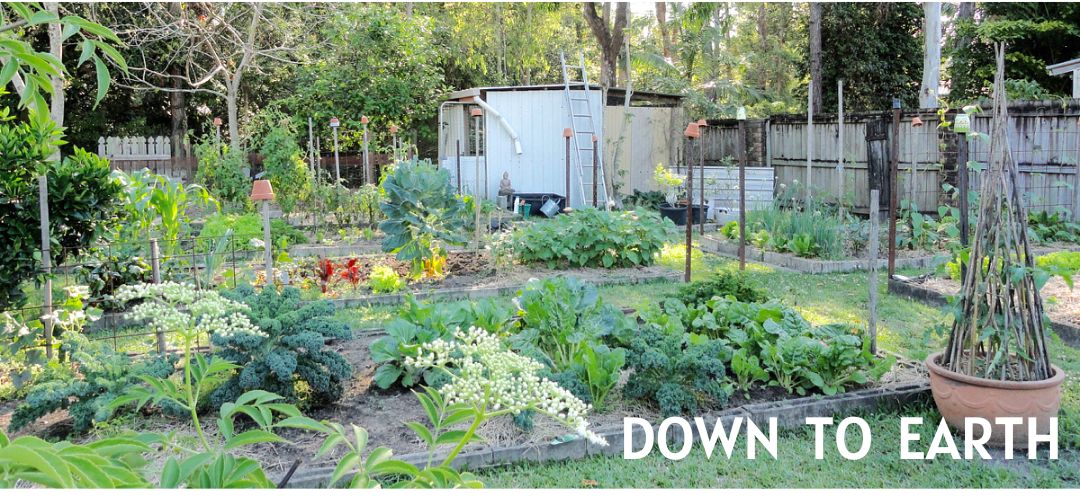Many of the skills we need when living simply don't exist in isolation, if you want to get the full measure of these things we do, you have to learn a number of skills to make it happen successfully. For instance, growing vegetables isn't only about gardening, when you learn how to sow seeds, tend and harvest vegetables, you also have to learn about how to enrich the soil, fertilise and provide water as well as food storage and cooking to make it work. Most skills are part of a process, often with several distinct skills supporting and making up the whole.
PREPARATION
Start by cleaning your sink. You want a clean work area and your sink will give you a good place to clean the vegetables and if you have a double sink, you'll also have a place to cool the vegetables after blanching them. If you don't have a double sink, use a large bowl or pot filled with cold water. The only other requirements are a colander, a large stockpot with a lid (depending on how much and what you're blanching), a slotted spoon to lift the vegetables out, or basket that fits inside the pot.
Set the pot on the stove to boil with the lid on. Keeping the lid on will help bring the water to the boil faster.
While that is happening, trim or peel your vegetables if they need it, and cut vegetables like beans or carrots into serving size. Whatever you would normally do to prepare your vegetables for cooking, do before blanching. For vegetables like silverbeet, leeks or spinach, make sure you wash them thoroughly to remove all the grit or sand. Make sure you do all your prep properly because when you cook the vegetables after you freeze them there will not be another opportunity to clean, prepare or trim the vegetables.
Make sure you drain the vegetables well. Excess water will turn to ice in the freezer.
BLANCHING TIMES
Make sure you know your blanching times because if you under-blanch it can stimulate the activity of the enzymes and can be worse than not blanching at all, and over-blanching will cause your vegetables to lose vitamins, minerals, colour and flavour.
Click here for blanching times.
Click here for blanching times.
HOW TO BLANCH
Green vegetables will turn bright green when they've been blanched.
Make sure you drain the vegetables well. Excess water will turn to ice in the freezer.
BLANCHING TIMES
Make sure you know your blanching times because if you under-blanch it can stimulate the activity of the enzymes and can be worse than not blanching at all, and over-blanching will cause your vegetables to lose vitamins, minerals, colour and flavour.
Click here for blanching times.
Click here for blanching times.
HOW TO BLANCH
- Divide the vegetables up into portions that will easily fit into your pot.
- When the water is at a rolling boil, put in the first portion and put the lid on the pot.
- Check the blanching guides below to find out how long to leave the vegetables in the boiling water. When the time it up, quickly get the vegetables out of the water using your spoon, or lift the basket out, and plunge them into very cold water - add ice if necessary. You want to cool them down fast to stop the cooking process.
- If you have several portions to blanche, carry on doing the above in the same water, making sure it's on a rolling boil before you add the vegetables.
- When you've finished blanching and cooling the vegetables, place them all into colanders to drain thoroughly. Let them stand for an hour or so to drain off as much water as possible.
- When you're happy that has happened, bag your vegetables into portions sizes suitable for your family.
- Mark with a permanent marker with the vegetable name and date.
- Place in the freezer. If you have a lot of home frozen bags, try to keep all the same types together or use ice cream containers or plastic baskets (depending on the size of your freezer) to organise the vegetables. Remember, you can't rely on coloured packets with photos on them like commercial frozen food so whatever you can do to organise your food will help you recognise what you have and assist your food storage program.
- A rolling boil is water boiling strongly with large bubbles - and when you stir it, the boiling continues.
- When you finish blanching you'll have some coloured water in the pot. Let it cool down and use it on the vegetable garden, there will be some nutrients in the water.







